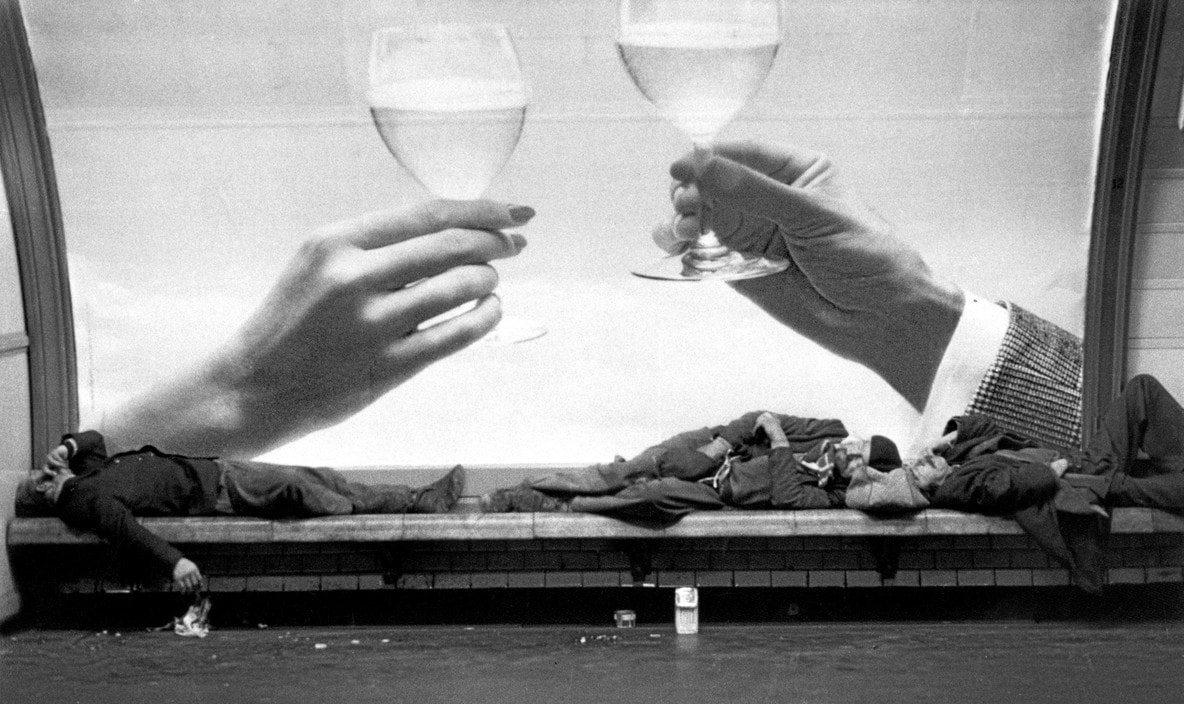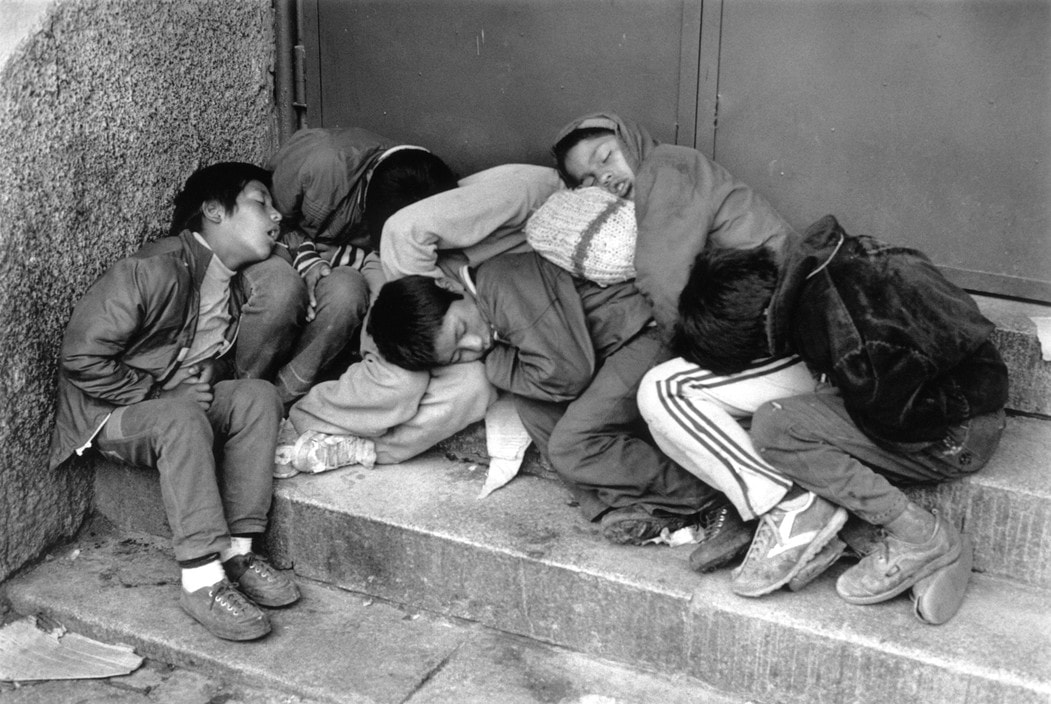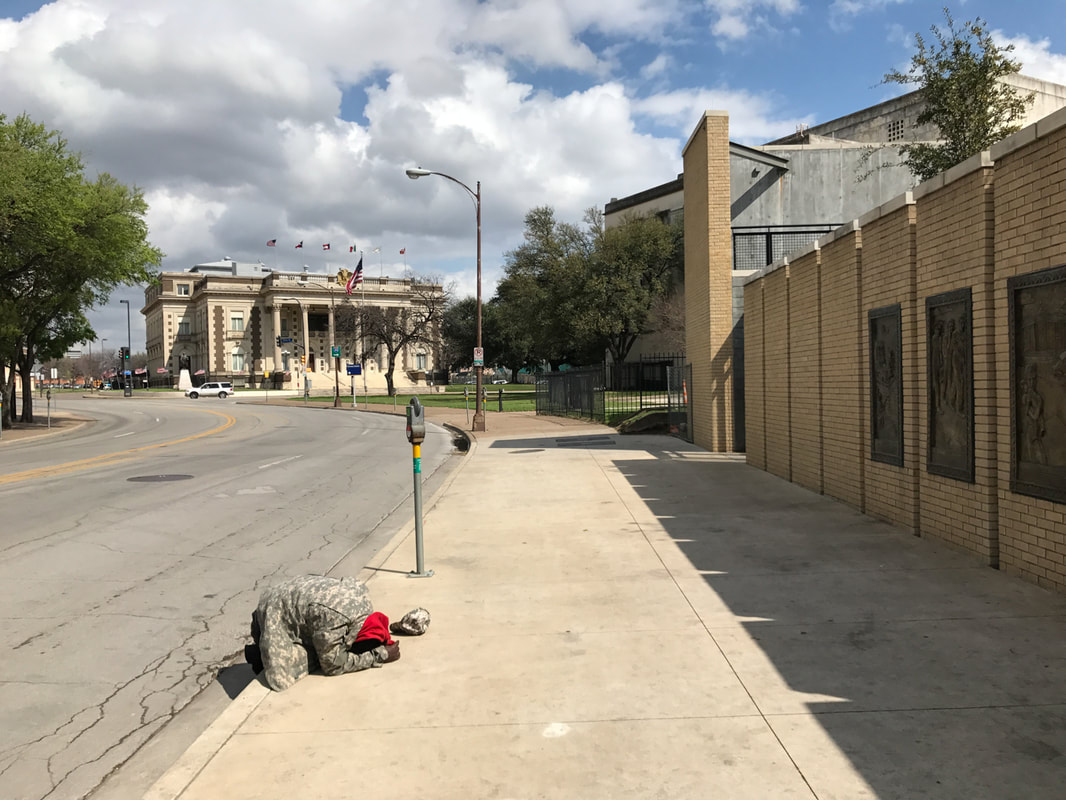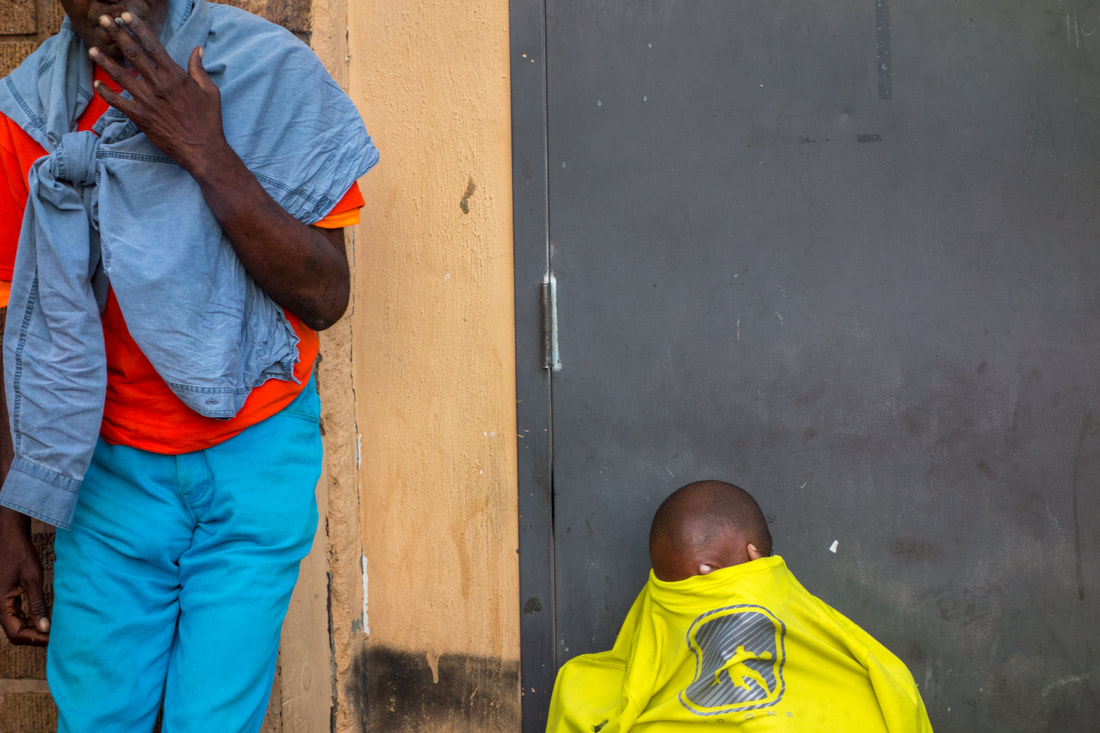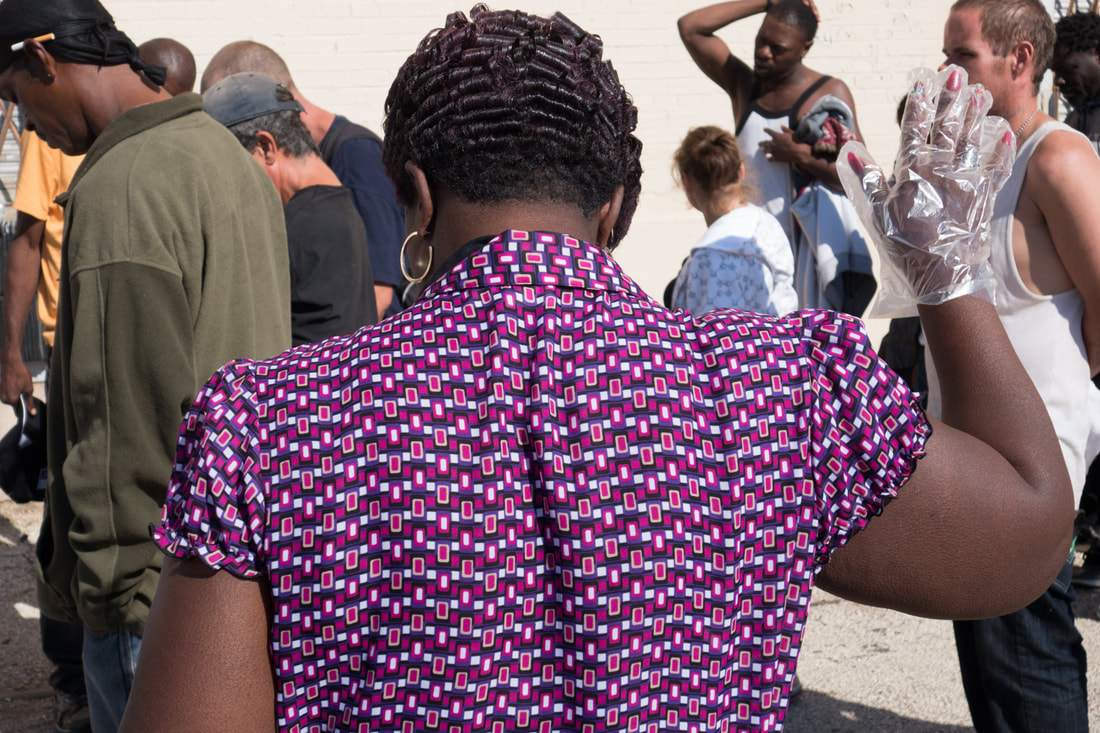The ethics of photographing people experiencing homelessness are complicated. Photographs can be voyeuristic, intrusive, and exploitative, or they can be a means for social advocacy.
Between 2012 and 2018, I photographed people on the street and inside The Stewpot, a facility that offers safe haven for homeless and at-risk individuals by providing resources for basic survival needs, as well as opportunities to start a new life. I focused primarily on the area near the corner of Park Avenue and Young Street in downtown Dallas, where I often saw and interacted with many of the same people on a weekly and sometimes daily basis. People often recognized me and the repartee that evolved created a context for my ongoing documentary work. If people chose not to be in my photographs, they waved me away or covered their faces. Over the years, I made hundreds of photographs that show the many facets of The Stewpot, featuring those in need and those helping to make a difference.
|
|
 Using the four corners
The Four Corners Project is meant to increase the authorship and authority of the photographer and the photograph itself by providing a fixed template to add context to each of the four corners of the image online. By clicking on each of the corners, the interested reader is able to find out more about what is referenced by the photograph. Try on the above image, and utilize the open source code on your own website. The project was conceived and then brought to completion by Fred Ritchin. He presented the idea publicly and demonstrated how it would work in a keynote speech to World Press Photo in Amsterdam at their 2004 Awards Ceremony. |
|
I made a short film about K2 addiction among homeless people in Dallas, Texas, where the drug is taking lives every day. K2 is a synthetic cannabinoid up to 100 times as potent as marijuana, the drug causes hallucinations, violent behavior, and leaves some comatose.
In addition to my photographs of the homeless, I directed a documentary film, Serving Second Chances, chronicling efforts to provide survival resources and opportunities for homeless and at risk people to start a new life.
Intertwined in the day-to-day operations of The Stewpot, the film focuses on three of its clients and their deeply personal struggles to stabilize their lives over three years: Gerald Williams, a musician whose crack addiction ruined his career; Alisa Flores, a victim of an abusive relationship; and Velietta Dickens Rogers, a rape survivor who contracted AIDS.
Intertwined in the day-to-day operations of The Stewpot, the film focuses on three of its clients and their deeply personal struggles to stabilize their lives over three years: Gerald Williams, a musician whose crack addiction ruined his career; Alisa Flores, a victim of an abusive relationship; and Velietta Dickens Rogers, a rape survivor who contracted AIDS.
|
|
Delve Deeper |
|
In 2016 Documentary Arts in association with The Stewpot and Encore Park Dallas launched a series of education program for children, grades 1-12. Danielle Naylor, then the Museum of Street Culture education coordinator, and I implemented a broad range of programming, including Photography and Social Justice, which asked students ages 11-16 to explore the neighborhood surrounding The Stewpot and the First Presbyterian Church of Dallas. Sharing three point-and-shoot cameras, the teens documented what they saw on the street, identified the indicators of homelessness, and discussed how photographs can make people more aware of issues related to social justice.
|
|
Delve Deeper
|
Find more info, videos, brochures, and resources for the educational programs implemented by The Museum of Street Culture.
|
|
Article about The Museum of Street Culture for the Center for the Future of Museums Blog.
|

